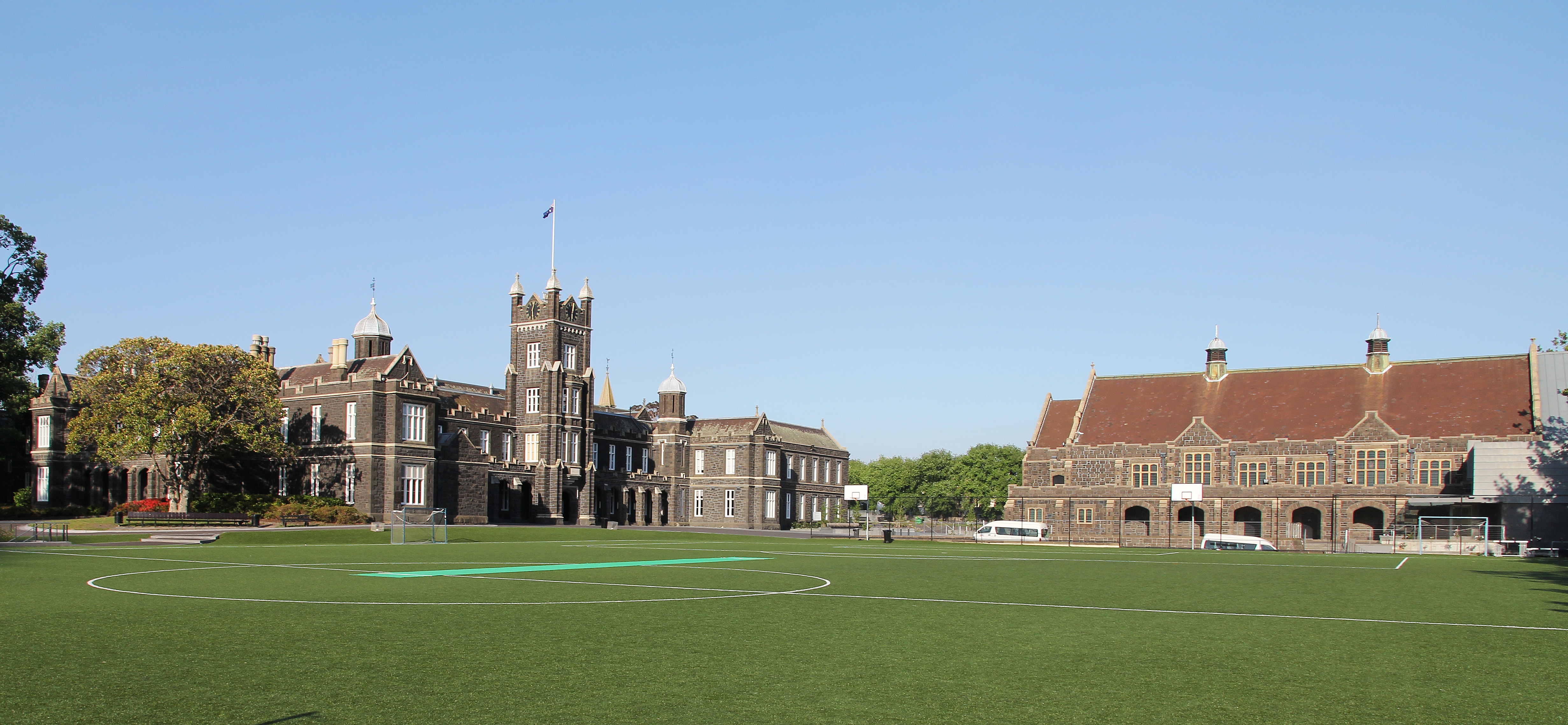|
Stanley Bruce
Stanley Melbourne Bruce, 1st Viscount Bruce of Melbourne, (15 April 1883 – 25 August 1967) was an Australian politician who served as the eighth prime minister of Australia from 1923 to 1929, as leader of the Nationalist Party. Born into a briefly wealthy Melbourne family, Bruce studied at the University of Cambridge and spent his early life tending to the importing and exporting business of his late father. He served on the front lines of the Gallipoli Campaign in World War I and returned to Australia wounded in 1917, becoming a spokesperson for government recruitment efforts. He gained the attention of the Nationalist Party and prime minister Billy Hughes, who encouraged a political career. He was elected to the House of Representatives in 1918, becoming a member of parliament (MP) for the seat of Flinders. He was appointed as treasurer in 1921, before replacing Hughes as prime minister in 1923, at the head of a coalition with the Country Party. In office, Bruc ... [...More Info...] [...Related Items...] OR: [Wikipedia] [Google] [Baidu] |
The Right Honourable
''The Right Honourable'' (abbreviation: ''Rt Hon.'' or variations) is an honorific Style (form of address), style traditionally applied to certain persons and collective bodies in the United Kingdom, the former British Empire and the Commonwealth of Nations. The term is predominantly used today as a style associated with the holding of certain senior public offices in the United Kingdom, Canada, New Zealand, and to a lesser extent, Australia. ''Right'' in this context is an adverb meaning 'very' or 'fully'. Grammatically, ''The Right Honourable'' is an adjectival phrase which gives information about a person. As such, it is not considered correct to apply it in direct address, nor to use it on its own as a title in place of a name; but rather it is used in the Grammatical person, third person along with a name or noun to be modified. ''Right'' may be abbreviated to ''Rt'', and ''Honourable'' to ''Hon.'', or both. ''The'' is sometimes dropped in written abbreviated form, but is al ... [...More Info...] [...Related Items...] OR: [Wikipedia] [Google] [Baidu] |
Hereditary Peer
The hereditary peers form part of the peerage in the United Kingdom. As of September 2022, there are 807 hereditary peers: 29 dukes (including five royal dukes), 34 marquesses, 190 earls, 111 viscounts, and 443 barons (disregarding subsidiary titles). Not all hereditary titles are titles of the peerage. For instance, baronets and baronetesses may pass on their titles, but they are not peers. Conversely, the holder of a non-hereditary title may belong to the peerage, as with life peers. Peerages may be created by means of letters patent, but the granting of new hereditary peerages has largely dwindled; only seven hereditary peerages have been created since 1965, four of them for members of the British royal family. As a result of the Peerage Act 1963 all peers except those in the peerage of Ireland were entitled to sit in the House of Lords, but since the House of Lords Act 1999 came into force only 92 hereditary peers, elected by and from all hereditary peers, are p ... [...More Info...] [...Related Items...] OR: [Wikipedia] [Google] [Baidu] |
Royal Fusiliers
The Royal Fusiliers (City of London Regiment) was a line infantry regiment of the British Army in continuous existence for 283 years. It was known as the 7th Regiment of Foot until the Childers Reforms of 1881. The regiment served in many wars and conflicts throughout its long existence, including the Second Boer War, the World War I, First World War and the World War II, Second World War. In 1968, the regiment was amalgamated with the other regiments of the Fusilier Brigade – the Royal Northumberland Fusiliers, the Royal Warwickshire Regiment, Royal Warwickshire Fusiliers and the Lancashire Fusiliers – to form a new large regiment, the Royal Regiment of Fusiliers. The Royal Fusiliers War Memorial, a monument dedicated to the almost 22,000 Royal Fusiliers who died during the First World War, stands on Holborn in the City of London. History Formation It was formed as a fusilier regiment in 1685 by George Legge, 1st Baron Dartmouth, from two companies of the Tower of Londo ... [...More Info...] [...Related Items...] OR: [Wikipedia] [Google] [Baidu] |
British Army
The British Army is the principal land warfare force of the United Kingdom, a part of the British Armed Forces along with the Royal Navy and the Royal Air Force. , the British Army comprises 79,380 regular full-time personnel, 4,090 Gurkhas, and 28,330 volunteer reserve personnel. The modern British Army traces back to 1707, with antecedents in the English Army and Scots Army that were created during the Restoration in 1660. The term ''British Army'' was adopted in 1707 after the Acts of Union between England and Scotland. Members of the British Army swear allegiance to the monarch as their commander-in-chief, but the Bill of Rights of 1689 and Claim of Right Act 1689 require parliamentary consent for the Crown to maintain a peacetime standing army. Therefore, Parliament approves the army by passing an Armed Forces Act at least once every five years. The army is administered by the Ministry of Defence and commanded by the Chief of the General Staff. The British ... [...More Info...] [...Related Items...] OR: [Wikipedia] [Google] [Baidu] |
Ethel Bruce
Ethel Dunlop Bruce, Viscountess Bruce of Melbourne (née Anderson; 25 May 1879 – 16 March 1967) was the wife of Stanley Bruce, who served as Prime Minister of Australia from 1923 to 1929. She was the first prime minister's wife to live at The Lodge. Early life Bruce was one of seven daughters born to Elizabeth () and Andrew George Anderson, part of "a large family ..with pioneer associations with western Victoria". She was of mostly Scottish ancestry, although she had an Irish grandmother. An uncle was Sir Walter Manifold, who served a term as President of the Victorian Legislative Council. Marriage Bruce first met her future husband while at school; she was three years his senior. On a visit to England in 1912, she became reacquainted with him, and they were married on 12 July 1913 at Sonning-on-Thames, Berkshire. They honeymooned in North America, then lived in London for a period before returning to Australia in 1917 and settling in Melbourne. Bruce was "caring and comp ... [...More Info...] [...Related Items...] OR: [Wikipedia] [Google] [Baidu] |
John Munro Bruce
John Munro Bruce (10 October 1840 – 4 May 1901) was an Australian businessman. He was born in Ireland to Scottish parents and arrived in the colony of Victoria at the age of 18. He became the managing director and eventual majority shareholder in Paterson, Laing & Bruce, one of Melbourne's leading softgoods firms. He also held a number of civic positions, including as the founding club captain of the Royal Melbourne Golf Club. His son Stanley Bruce became prime minister of Australia. Early life Bruce was born in Brooklawn, County Leitrim, Ireland, the son of Mary (née Munro, Monro or Monroe) and George Williamson Bruce. His family was Scottish, originating in East Ayrshire. After his father's early death, Bruce was sent to Scotland to attend Madras College in St Andrews. He rejoined his mother in Newry in 1853 and was apprenticed to Henry Hawkins & Co., a linen firm. He was largely self-educated, as was his brother William Duff Bruce who became a civil engineer in Indi ... [...More Info...] [...Related Items...] OR: [Wikipedia] [Google] [Baidu] |
Barrister
A barrister is a type of lawyer in common law jurisdictions. Barristers mostly specialise in courtroom advocacy and litigation. Their tasks include taking cases in superior courts and tribunals, drafting legal pleadings, researching law and giving expert legal opinions. Barristers are distinguished from both solicitors and chartered legal executives, who have more direct access to clients, and may do transactional legal work. It is mainly barristers who are appointed as judges, and they are rarely hired by clients directly. In some legal systems, including those of Scotland, South Africa, Scandinavia, Pakistan, India, Bangladesh, and the British Crown dependencies of Jersey, Guernsey and the Isle of Man, the word ''barrister'' is also regarded as an honorific title. In a few jurisdictions, barristers are usually forbidden from "conducting" litigation, and can only act on the instructions of a solicitor, and increasingly - chartered legal executives, who perform tasks ... [...More Info...] [...Related Items...] OR: [Wikipedia] [Google] [Baidu] |
Ashurst LLP , subsidiary of Ashurst LLP
{{disambiguation, geo ...
Ashurst may refer to: Places United Kingdom *Ashurst, Hampshire **Served by Ashurst New Forest railway station * Ashurst, Kent **Served by Ashurst (Kent) railway station * Ashurst, Lancashire *Ashurst, West Sussex *Ashurst Wood, West Sussex Other places * Ashurst, Arizona, United States *Ashhurst, a town in New Zealand Other uses * Ashurst (surname) * Ashurst baronets, an English baronetcy * Ashurst LLP, an international law firm headquartered in London **Ashurst Australia Ashurst Australia is the Australian branch of Ashurst LLP, an international commercial law firm. The Australian headquarters of Ashurst are in Sydney. Prior to its acquisition by Ashurst, the Australian firm was named Blake Dawson, one of th ... [...More Info...] [...Related Items...] OR: [Wikipedia] [Google] [Baidu] |
Lawyer
A lawyer is a person who practices law. The role of a lawyer varies greatly across different legal jurisdictions. A lawyer can be classified as an advocate, attorney, barrister, canon lawyer, civil law notary, counsel, counselor, solicitor, legal executive, or public servant — with each role having different functions and privileges. Working as a lawyer generally involves the practical application of abstract legal theories and knowledge to solve specific problems. Some lawyers also work primarily in advancing the interests of the law and legal profession. Terminology Different legal jurisdictions have different requirements in the determination of who is recognized as being a lawyer. As a result, the meaning of the term "lawyer" may vary from place to place. Some jurisdictions have two types of lawyers, barrister and solicitors, while others fuse the two. A barrister (also known as an advocate or counselor in some jurisdictions) is a lawyer who typically special ... [...More Info...] [...Related Items...] OR: [Wikipedia] [Google] [Baidu] |
Trinity Hall, Cambridge
Trinity Hall (formally The College or Hall of the Holy Trinity in the University of Cambridge) is a constituent college of the University of Cambridge. It is the fifth-oldest surviving college of the university, having been founded in 1350 by William Bateman, Bishop of Norwich, to train clergymen in canon law following their decimation during the Black Death. Historically, Trinity Hall taught law; today, it teaches the sciences, arts, and humanities. Trinity Hall has two sister colleges at the University of Oxford, All Souls and University College. Notable alumni include theoretical physicists Stephen Hawking and Nobel Prize winner David Thouless, Australian Prime Minister Stanley Bruce, Canadian Governor General David Johnston, philosopher Marshall McLuhan, Conservative cabinet minister Geoffrey Howe, Charles Howard, 1st Earl of Nottingham, writer J. B. Priestley, and Academy Award-winning actress Rachel Weisz. History The devastation caused by the Black Deat ... [...More Info...] [...Related Items...] OR: [Wikipedia] [Google] [Baidu] |
Melbourne Grammar School
(Pray and Work) , established = 1849 (on present site since 1858 - the celebrated date of foundation) , type = Independent, co-educational primary, single-sex boys secondary, day and boarding , denomination = Anglican , head_label = Headmaster , head = Philip Grutzner , founder = Charles Perry, 1st Anglican Bishop of Melbourne , chaplain = Rev. Hans Christiansen , years = P–12 , chair_label = Chairman of Governors , chair = Andrew Michelmore , city = South Yarra & Caulfield , state = Victoria , country = Australia , coordinates = , gender = Co-educational (P–6), Boys (7–12) , enrolment = 1,782 (P–12) , colours = Oxford Blue (Navy) , affiliation = Associated ... [...More Info...] [...Related Items...] OR: [Wikipedia] [Google] [Baidu] |
United Australia Party
The United Australia Party (UAP) was an Australian political party that was founded in 1931 and dissolved in 1945. The party won four federal elections in that time, usually governing in coalition with the Country Party. It provided two prime ministers: Joseph Lyons ( 1932–1939) and Robert Menzies ( 1939–1941). The UAP was created in the aftermath of the 1931 split in the Australian Labor Party. Six fiscally conservative Labor MPs left the party to protest the Scullin Government's financial policies during the Great Depression. Led by Joseph Lyons, a former Premier of Tasmania, the defectors initially sat as independents, but then agreed to merge with the Nationalist Party and form a united opposition. Lyons was chosen as the new party's leader due to his popularity among the general public, with former Nationalist leader John Latham becoming his deputy. He led the UAP to a landslide victory at the 1931 federal election, where the party secured an outright majorit ... [...More Info...] [...Related Items...] OR: [Wikipedia] [Google] [Baidu] |

_(cropped).jpg)








